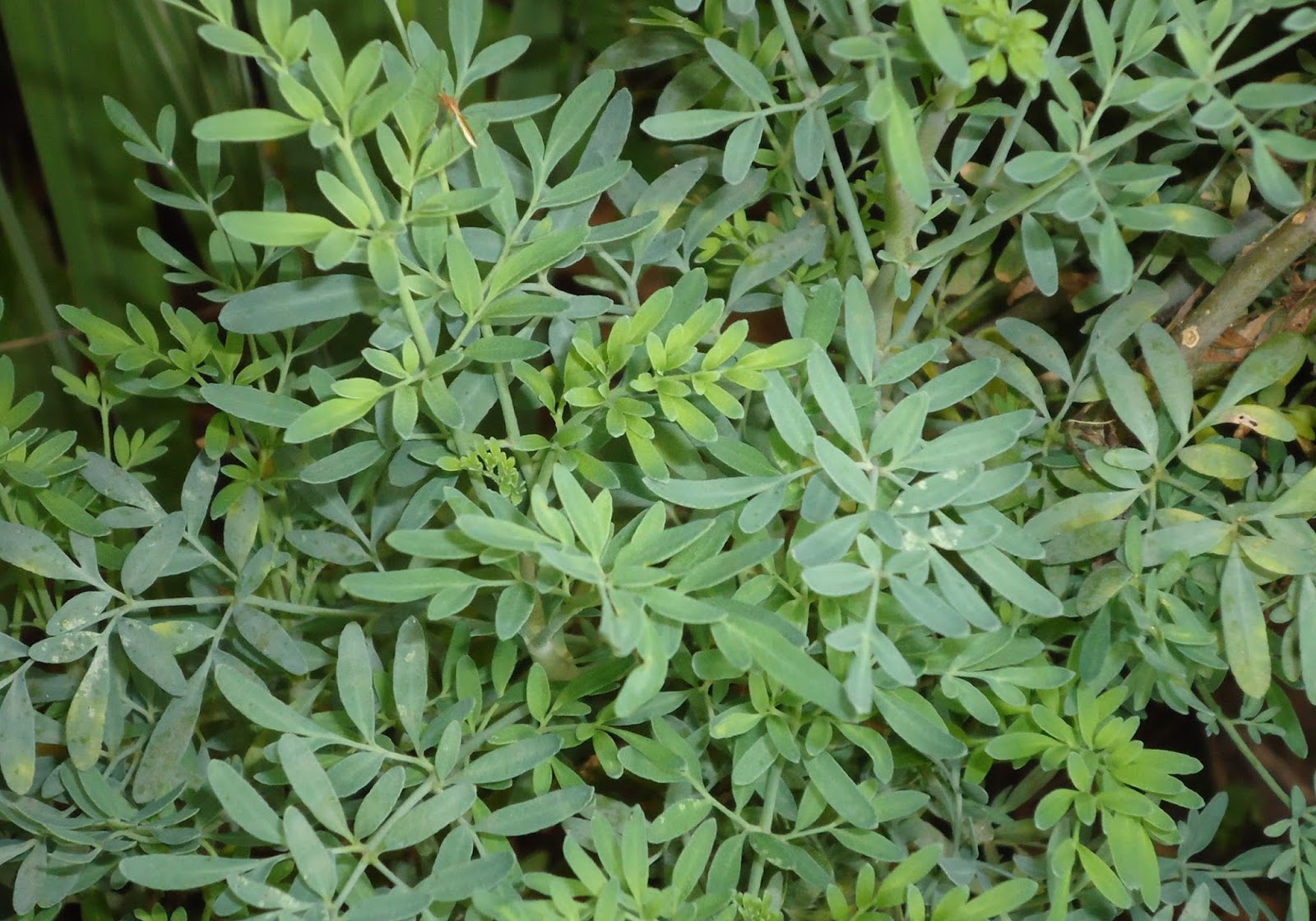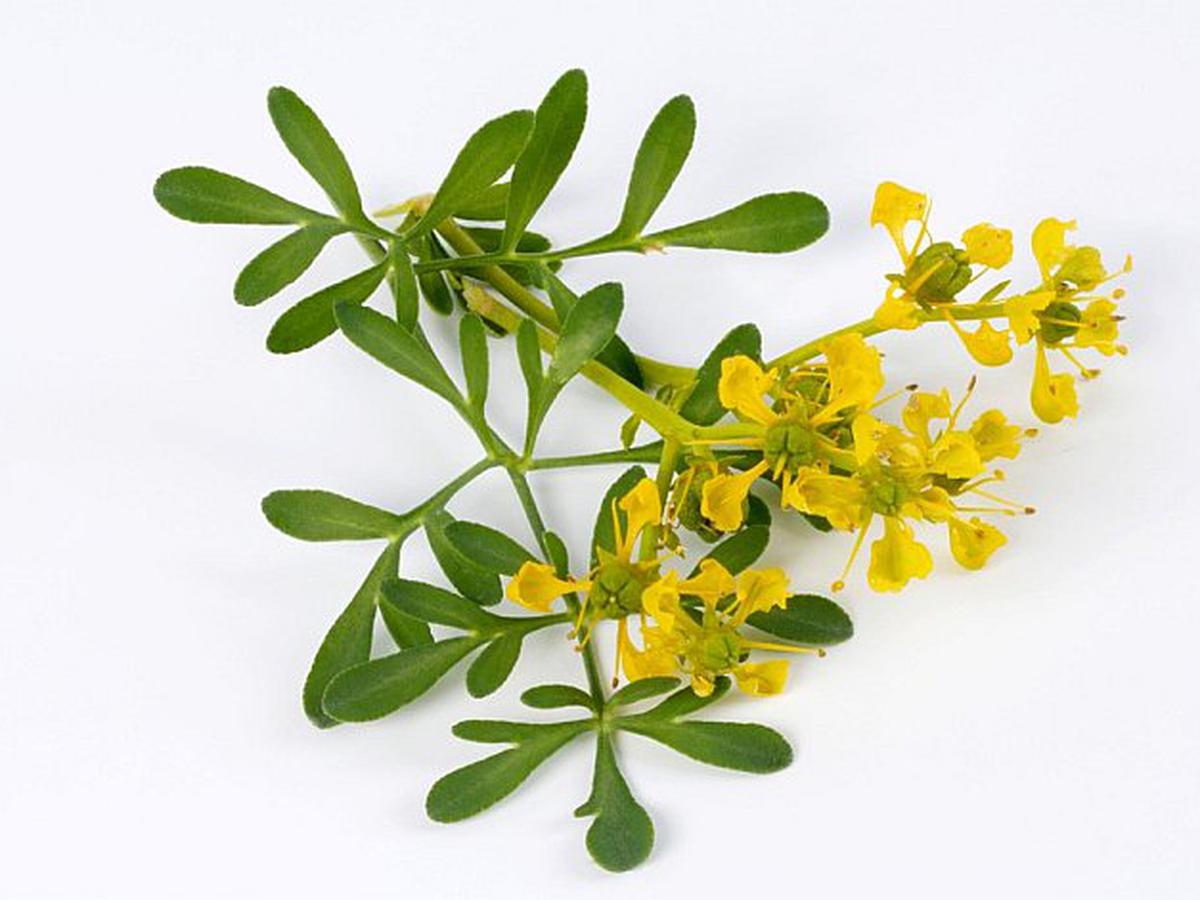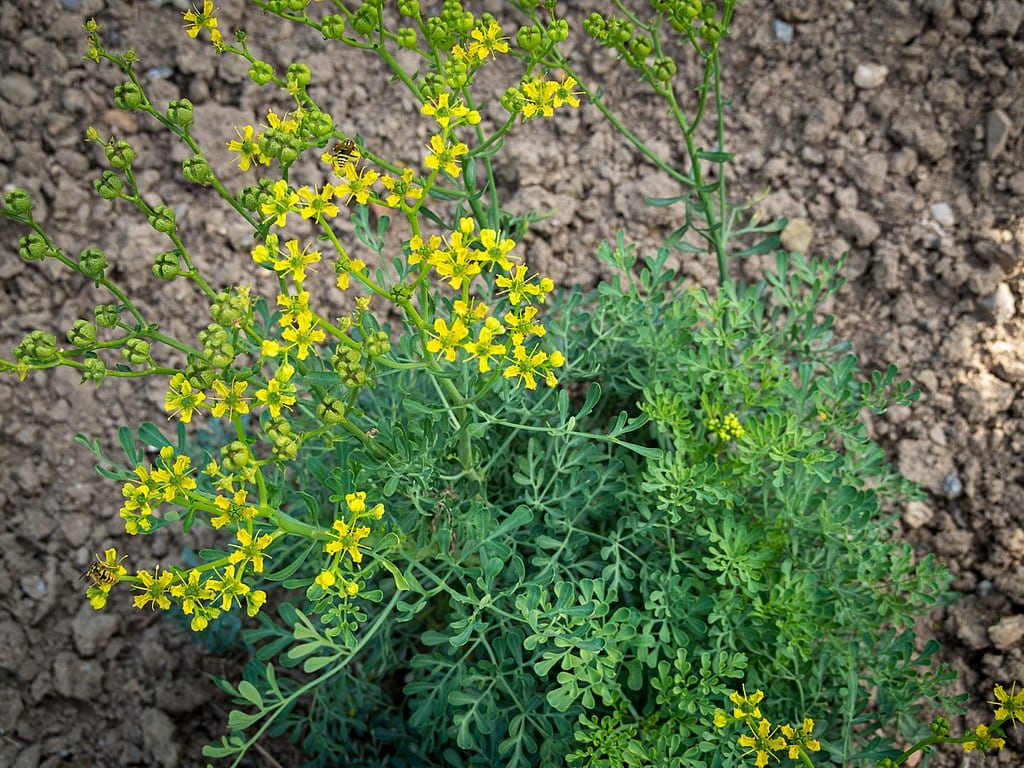Common rue is a well-known species not as a culinary ingredient, but as an ingredient for medicinal preparations, which can be infusions, can be added as an ingredient to make pharmaceuticals, etc. In this article we will see its characteristics and the rue care.

Ruda
Speaking of "rue" refers to a whole genus of evergreen dwarf shrubs that are native to the Mediterranean, from the group of archipelagos called "Macaronesia" and Asia (specifically in the southwest). However, of the nearly 40 species that have been described in biology textbooks, one of them is the most widely recognized and is also referred to when the term "Rue" is used.
Before talking about it, it should be known that these shrubs belong to the family Rutaceae, which is part of the order sapindales, of the class magnoliopsida, these are the lower levels found in the kingdoms of living beings, in the kingdom Plant in this case. Now, the medicinal plant that is the focus of this article is the Graveolens route.
Features
Before seeing the care of rue, we find some characteristics that can be used to get to know this species:
- Its leaves can have two or three pinnate, these are parts of the leaves that have a rachis from which smaller leaflets come out in pairs or in trios, it is something similar to feathers.
- Its flowers have between four or five petals that are approximately one centimeter in diameter, the color of this part of the plant is yellow.
- It also bears fruit, which function as a capsule where all the seeds are housed that will allow it to reproduce and see several Flowering shrubs of this species.
Uses
This plant has long been present in the kitchens of the European continent, in Rome, for example, it was eaten as a food, today this is not the case because it is too bitter. Likewise, it is still an ingredient in some preparations on the African continent (exactly in the north).
The leaves of this species are the ones that contain the largest amount of oils that are used for various things, because it has many properties that relieve and combat problems in various areas of the body. However, its stems and flowers have also been distilled for remedies. Some of the substances that can be found in this plant are alkaloids, tannins, vitamin C, some acids such as aniseic, etc.
Rue is used as a plant analgesic Due to the acids it contains, in addition to the one mentioned above, it has salicylic acids, which is ideal for reducing pain. Also when ingesting it in an infusion, this plant has relieved anxiety. also works as vasoprotective, since it tones the blood vessels and arteries, which favors the flow of blood and the activation of circulation.
It also has properties that focus on the digestive system and its organs, problems such as stomach cramps, digestive disorders, diarrhea or constipation, muscle spasms, among others, are relieved with infusions or medicinal preparations that contain rue, some pharmaceutical products contain good amounts of the oils of this plant.
Other conditions he treats include some related to menstruation, many women have severe pain when they are in those days, infusions of rue allow to relieve them a little, it also works as antiparasitic because it gradually deworms the organism. It is also good for treating gum problems, to relieve cramps, to treat some visual problems such as cataracts, for varicose veins, among other things.
Finally, it can be a good species to decorate an open or closed space such as a terrace, a garden, etc. In this sense, it is not only used as a food ingredient and as an ingredient for medicinal preparations, it is also an ornamental plant that can be planted indoors or in an open space. In fact, it does not need great care for its pruning, when the winter is over you can cut some dry leaves or those that have grown a lot if you want to control their size.
Now, although rue has so many uses, it also has some negative effects, specifically on the kidney and liver due to the oils it contains. However, that is not the only thing that can harm, by stimulating some muscles of the uterus this plant can cause an abortion, it is normally used to start the menstrual period, but it is also used to cause an abortion, to reduce the level of fertility and in some animals it is able to reduce the amount of sperm they produce.
Actually, ingesting this plant too often can be detrimental to health and even cause death from uterine bleeding, which is why its use is currently not recommended. Only in adequate amounts this plant can work for what is indicated above, so a specialist should be consulted to be able to apply the treatment in the healthy amount. In addition to that, it is not recommended to mix with other plants.
reproduction process
The reproduction of this species can be possible thanks to seeds or cuttings, the first ones must be sown during the spring and the second ones must be planted during the summer, the procedure to reproduce this rue plant with seeds is:
- The first step is to prepare the pot or seedbed with soil mixed with mulch or perlite, the percentage should be 50% soil and 50% either of the two options mentioned.
- The next thing will be to place the seeds in the seedbed and then cover them a little with a (not very thick) layer of soil.
- Followed by this, it should be watered little by little, the intention is to keep your soil a little moist, not to flood it.
- You can also put a few pinches of sulfur (powdered), to prevent fungi from starting to harm it.
- Finally, only the ideal place (with semi-shade) should be chosen so that it grows in a healthy way and its leaves do not burn as it grows.
- As for the waiting time, it is approximately 15 or 20 days that the seeds take to germinate.
The procedure to multiply the rue by means of cuttings is much simpler, the first thing will be to cut a small piece of the plant, this must measure at least 20 or 30 centimeters long After that, the base of that piece will be moistened with a little of rooting (it can be the ones sold in stores or you can make one at home).
The next thing will be to plant that cutting in the brown cubes called “vermiculites”, which in addition to containing potassium and other elements, retain water and nutrients very well, which facilitates the growth of the cutting. To finish, it will be watered a little to moisten and that's it. From then on, it will only be necessary to wait for the shoots to come out and for it to grow little by little, taking into account the care of the rue that will be explained below.
Variety of care
Rue has another positive point in its favor and that is that it is quite resistant both to certain temperatures and to the pests that can attack it. It will be necessary to know the care of rue to ensure that this plant can grow successfully, if you want to cultivate and maintain it for a long time to obtain its medical benefits. In this sense, the following sections will specify the main points to keep it healthy.
Lighting and temperature
This plant resists cold and heat well, although it does not usually survive strong frosts for long, it will survive cold seasons where temperatures reach -7 °C, but temperatures below that can be harmful. In this sense, it can be planted in a pot and kept indoors when temperatures are very low.
This species prefers spaces that have tropical or subtropical climates, so it does not get along very well with the cold, in fact, it is not recommended to place it in places with strong air currents. What is recommended is to place it in a place where sunlight can reach it indirectly, direct light can burn its leaves, but if it is placed in a place with enough light it will grow very well. It is important to take into account that they do not have a very pleasant smell when choosing their location.
Land and subscriber
This species does not require a specific soil, it has even been seen how it has grown in a poor substrate. Still, the ideal soil for rue is one that has plenty of organic matter and is alkaline. This greatly favors their flower production and their appearance, since they grow stronger and healthier than a rue plant on another type of soil. As for the subscriber, this can be anyone who is organic.
Irrigation
Contrary to its reduced resistance to frost this plant can survive a dry season very well, even so, it is not necessary to water it too much but two or three times a week to keep it hydrated and protected from the pests that usually attack it, which will be mentioned below to end this rue care section.
pests and diseasedates
To close the rue care section, we will talk about the pests that can affect it. It was previously mentioned that this plant is quite resistant to high and low temperatures, but it is also resistant to pests. Even so, it can be attacked by whiteflies, mites or butterfly larvae Papilio Machaon, in those cases insecticides can be applied, diatomaceous earth can be used, or it can be covered with mosquito netting. The latter can be very useful when she is just starting to grow.

